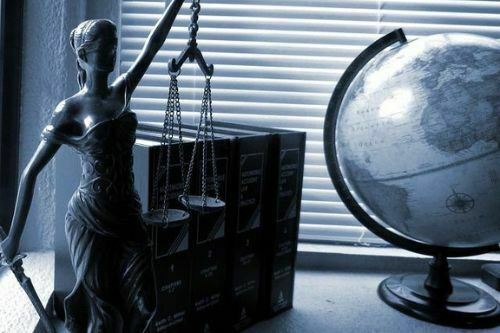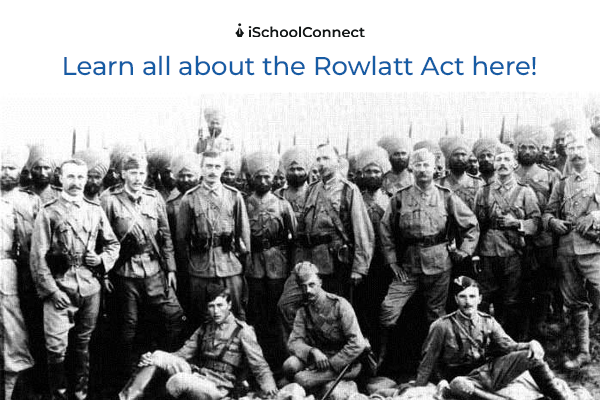Table of Contents
The Rowlatt Act is a turning point in the history of India’s long fight for independence from British rule. This is an event that is studied in classrooms across the country, allowing students to gain in-depth knowledge of the events that shook the nation.
Learning how to write a short note on the Act can help you communicate your knowledge clearly and effectively. To write about the Rowlatt Act, it is important to understand what this historical event was all about.
Keep reading to learn more about how to write a short note on Rowlatt Act!
What is the Rowlatt Act of 1919?

The Rowlatt Satyagraha or Rowlatt Act 1919 is regarded as one of the most controversial legislative bills passed by the British government. This bill significantly curtailed the civil liberties of the Indian population in the early 20th century.
The Act single-handedly transformed the Indian National Movement and gave prominence to one of India’s fiercest freedom fighters, Mahatma Gandhi.
You may be asked to write a short note on the Rowlatt Act in competitive exams across the country. Learning everything there is to know about this event and its consequences can shape and improve the quality of your short essay.
What was the impact of the Rowlatt Act?
The impact was as follows-
- The Rowlatt Act established an indefinite ban on public gatherings of any nature across the country.
- The Act also severely restricted the free press and gave the police the power to search public & private properties with a warrant.
- The Act was an extension of the emergency law that was passed in the aftermath of the First World War.
- The Rowlatt Act completely took away Indian citizens’ right to legal discourse and suspended the constitutional right to a state called ‘habeas corpus’.
- The act also gave the government authority the power to arrest any suspected person without a warrant and detain them for up to 2 years without a trial.
These are the salient features that you will be expected to cover when you write a short note on the Rowlatt Act. Be sure to emphasize each point briefly and talk about the massive opposition of the Indian citizens toward the Act.
You can even mention Indian leaders such as Mohammad Ali Jinnah, who resigned from the legislative assembly immediately after the Act was passed.
What is the Jallianwala Bagh Massacre?
The Jallianwala Bagh Massacre is single-handedly regarded as one of the most horrifying events that took place in Indian history. The massacre was a direct consequence of the bill passed and mentioning the following points when you write a short note on Rowlatt Act can help you cover the important details-
- Several protests and riots took place in Punjab shortly after the Rowlatt Act was established.
- Owing to the alarming situation brewing in the state, Punjab was put under martial law. A provision under this law was that it was illegal for more than 4 people to assemble at a specific place.
- On the day of the festival of Baisakhi which was held on 13th April 1919 in Jallianwala Bagh, a crowd of non-violent protestors had gathered.
- Among the crowd were children and pilgrims who had traveled long distances to celebrate the festival.
- The event was also a peaceful protest that had been organized against the wrongful arrest of Congress leaders and the Act. This is an important point to mention when you write a short note on the Rowlatt Act.
- General Dyer, the Lieutenant-Governor of Punjab, ordered his men to block the only entrance in the garden and open fire on the peaceful gathering. The gathering included women and children as well.
- The massacre took more than 400 civilian lives and injured more than 1200 peaceful protestors.
What is the Hunter Commission?

The Hunter Commission is another essential point that you will have to cover when you write a short note on the Rowlatt Act. This was a commission that was formed to investigate the Jallianwala Bagh shootings and was formed by the government.
The commission was formed on October 14, 1919, and named after Lord William Hunter. The commission also had Indian members as a part of the core team.
After the relevant investigations were conducted, the final report was submitted to the government in March 1920. In this report, the committee unanimously condemned and criticized General Dyer’s actions. However, The Hunter Committee did not impose any disciplinary action or penalty against General Dyer.
What are the timelines to keep in mind when writing a short note on the Rowlatt Act?
Keep the following dates and events in mind when you write a short note on the Rowlatt Act. These dates and the flow of events can help you draft a clear, comprehensive, and concise answer to the question asked about the event.
- 1917 – The then British Government of India appointed a committee to investigate non-cooperative activities in India and implement measures to curb the revolution.
- 1919 (March) – The British government passed the Rowlatt Act despite popular opposition. The opposition threatened the civil liberties of Indians, and Mahatma Gandhi launched a nationwide satyagraha. However, the hartal was canceled as the movement steadily grew more violent.
- 1919 (April) – The Jallianwala Bagh Massacre took place against a group of peaceful protestors, killing hundreds and injuring thousands.
- 1919 (October) – The Hunter Commission was appointed to investigate the Jallianwala Bagh Massacre.
- 1922 – The Rowlatt Act was repealed by Lord Reading.
Key takeaways
- The Rowlatt Act is an important event in the history of India’s fight for freedom against British rule. As a result, learning how to write a short note on the Rowlatt Act can help you answer important questions in national-level exams.
- The above prompts and pointers are designed to help you write a clear, comprehensive, and concise note on the events that took place then.
- When you write a short note on the Rowlatt Act, be sure to adhere to the timeline and sequence of events that unfolded. This will create a structure and flow to your answer.
Was this blog informative? If so, please share your thoughts in the comments below. Click here to reach out to us for more information on the Rowlatt Act!
Liked this blog??Read more: Corporate Law Courses – Practice areas, universities, and more
FAQs
Q1. When was the Non-Cooperation Movement launched?
Answer – The Non-Cooperation Movement was launched on 5th September 1920 and was led by Mahatma Gandhi.
Q2. What did Rabindranath Tagore do to protest the Rowlatt Act?
Answer – Rabindranath Tagore renounced his knighthood in protest of the Rowlatt Act.
Q3. Why and when did Mahatma Gandhi withdraw the Non-Cooperation Movement?
Answer – Mahatma Gandhi withdrew the Non-Cooperation Movement on April 18, 1919, as he was overwhelmed by the atmosphere of violence.






